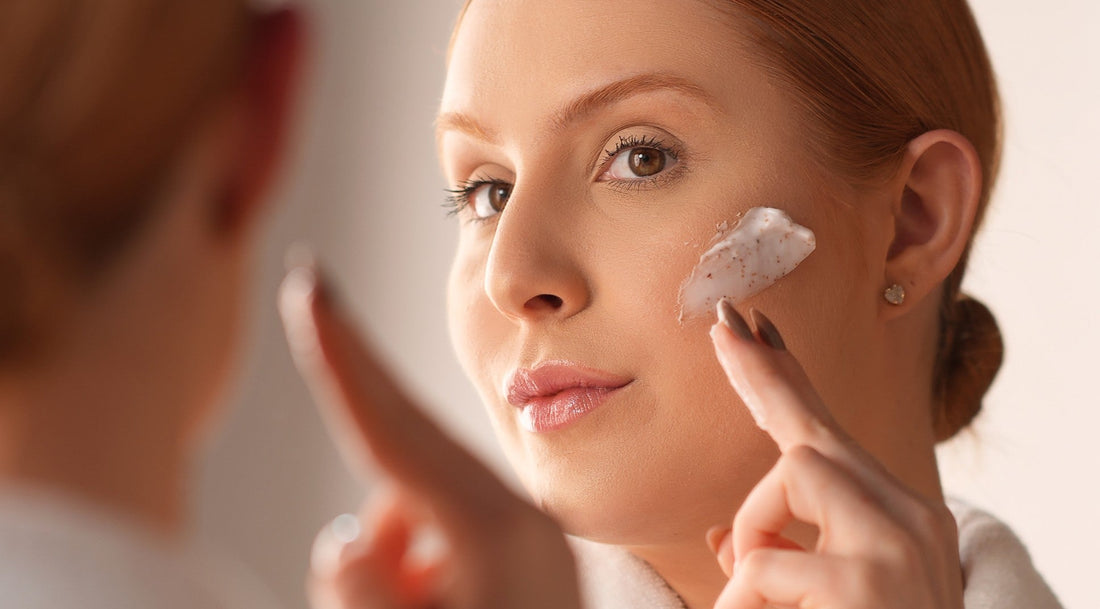
Facial Exfoliation: The Importance of Regularly Removing Dead Skin Cells
Share
Facial exfoliation is an essential step in any skincare routine. By removing dead skin cells from the surface, exfoliation promotes cell renewal, leaving the skin softer, brighter, and more even. However, not all skin types are the same, and the frequency and type of exfoliant should be adjusted accordingly. In this article, we will explore the key benefits of exfoliation, how to choose the right exfoliant, and best practices for safe and effective exfoliation.
Why Is Regular Exfoliation Important?
Over time, dead skin cells accumulate on the skin’s surface, leading to a dull appearance, rough texture, and clogged pores. Exfoliation is essential for removing these cells and promoting smoother, more revitalized skin. Here are the main benefits of regular exfoliation:
1. Stimulates Cell Renewal
Exfoliation accelerates the natural skin renewal cycle by removing dead cells and allowing new, healthy cells to emerge, giving the skin a more youthful and radiant appearance.
2. Enhances Product Absorption
By clearing away dead skin, exfoliation makes the skin more receptive to skincare products, such as serums and moisturizers, allowing them to penetrate deeper and work more effectively.
3. Prevents Clogged Pores
Exfoliation helps unclog pores, reducing the chances of blackheads and acne. Keeping the pores clean also minimizes their appearance.
4. Evens Out Skin Tone
Regular exfoliation helps to fade dark spots and even out skin tone. This is especially beneficial for those with hyperpigmentation or acne scars.
Types of Exfoliation: Mechanical vs. Chemical
There are two main types of exfoliation: mechanical and chemical. Each has its benefits, and the best choice depends on your skin type and needs.
1. Mechanical Exfoliation
This type of exfoliation involves using physical particles, such as sugar-based scrubs, fine grains, or facial brushes, to remove dead skin cells. It is particularly effective for those seeking immediate results and a deeper cleansing effect. However, it should be used cautiously on sensitive skin, as it can cause micro-tears.
2. Chemical Exfoliation
Unlike mechanical exfoliation, chemical exfoliation uses gentle acids, such as AHAs (alpha-hydroxy acids) and BHAs (beta-hydroxy acids), to dissolve dead skin cells and promote cell renewal without friction. AHAs are ideal for dry or sun-damaged skin, while BHAs are best for oily and acne-prone skin, as they penetrate deeper into the pores.
How Often Should You Exfoliate?
The frequency of exfoliation depends on your skin type and the type of exfoliant you use:
-
Oily or Acne-Prone Skin: Can benefit from exfoliation 2 to 3 times per week, especially with chemical exfoliants like salicylic acid (BHA), which helps unclog pores.
-
Dry or Sensitive Skin: Should exfoliate less frequently, typically once a week, using a gentle exfoliant to avoid irritation.
-
Normal or Combination Skin: Can exfoliate 1 to 2 times per week, alternating between mechanical and chemical exfoliation to maintain balance.
How to Exfoliate Correctly
1. Choose the Right Exfoliant
Selecting the appropriate exfoliant for your skin type is essential to avoid irritation and achieve the best results. If you have sensitive skin, opt for mild exfoliants and avoid those with overly abrasive particles.
2. Apply Gently
If using a mechanical exfoliant, apply it with light, circular motions. Excessive friction can damage the skin barrier, causing redness or micro-injuries.
3. Avoid Over-Exfoliation
Excessive exfoliation can strip the skin’s protective barrier, leading to sensitivity, dryness, and even breakouts. Stick to the recommended frequency for your skin type.
4. Hydrate After Exfoliation
Exfoliation can leave the skin more vulnerable and in need of hydration. After exfoliating, apply a nourishing moisturizer or a hyaluronic acid serum to lock in moisture and protect the skin.
Exfoliation and Other Skincare Treatments
If you are using other active ingredients, such as retinol or vitamin C, be cautious when combining them with exfoliation. Using multiple active ingredients simultaneously can increase the risk of irritation. A good approach is to alternate exfoliation days with days when you apply other active products.
Long-Term Benefits of Regular Exfoliation
With consistent exfoliation, you will not only see immediate improvements but also long-term benefits. Your skin will become more resilient, wrinkles will appear softer, and pores will look less noticeable. Renewed skin has a brighter and more even complexion, and the texture becomes significantly smoother.
Conclusion
Facial exfoliation is a vital step in maintaining healthy, glowing, and youthful skin. By regularly removing dead skin cells, you help your skin regenerate, improve texture, and enhance the absorption of other skincare products. However, it is crucial to choose the right exfoliation method for your skin type and use it in moderation.
Follow the best practices to avoid irritation and ensure that you are taking the best care of your skin. Invest in a good exfoliation routine and enjoy smoother, more radiant, and rejuvenated skin!
